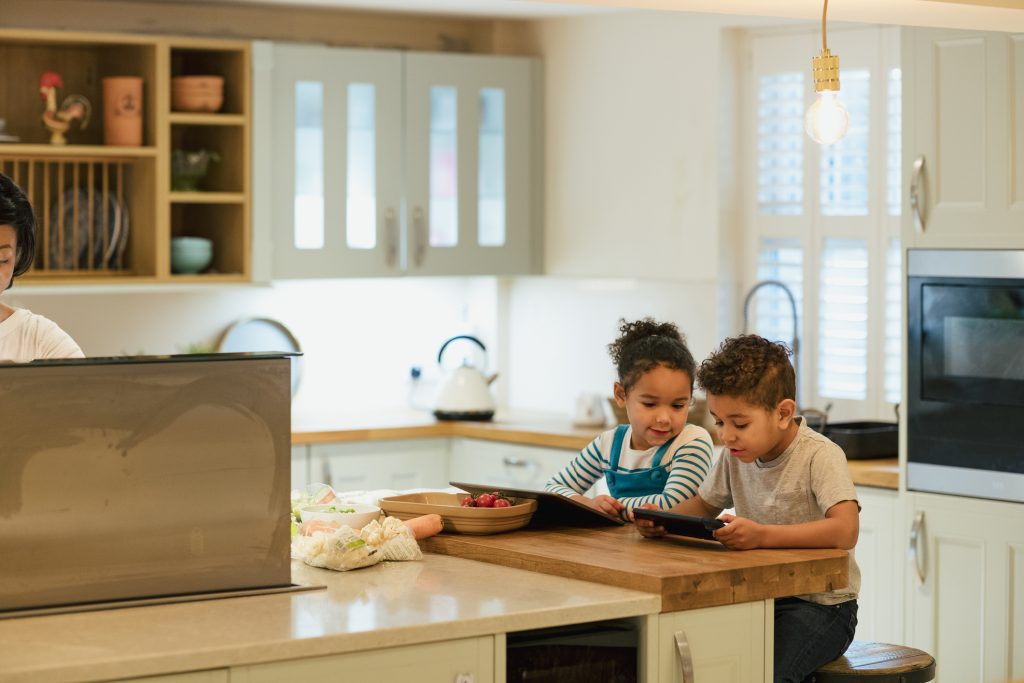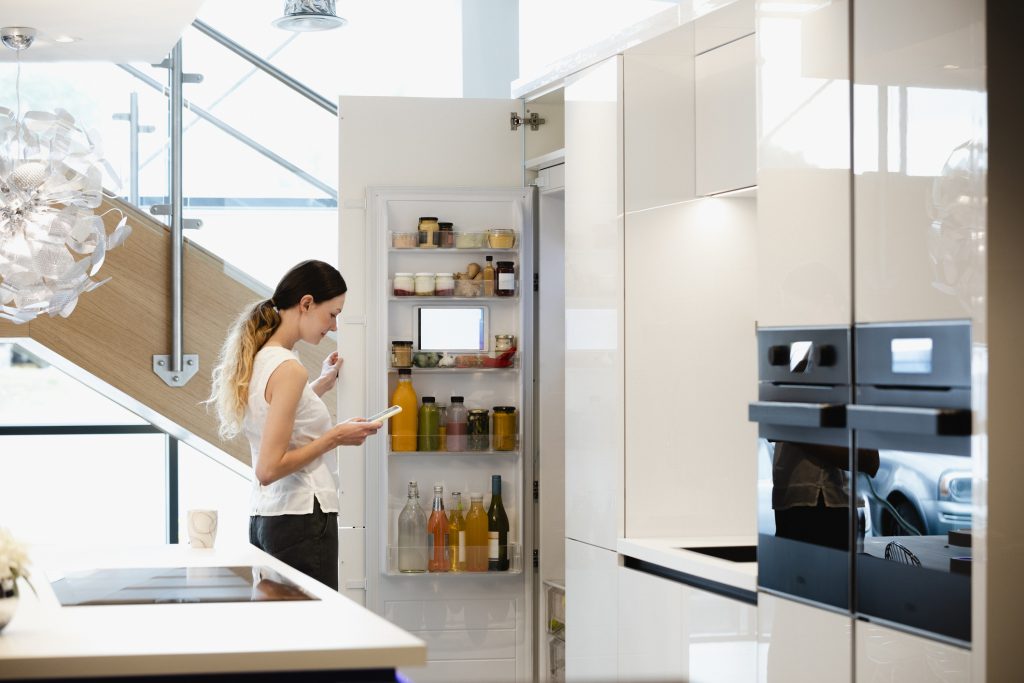Having a more energy efficient kitchen isn’t simply about replacing all your appliances with better-performing new ones.
Such a move would be unaffordable for the vast majority of households, and getting the latest models when your current appliances are still working is not always the most sustainable option, if you’re seeking to live a more low-carbon lifestyle.
There might be plenty of life left in what you’ve got, and there are ways to get more out of those existing appliances – while also ensuring that any new ones you do decide to invest in are bringing the carbon and bill savings you’re looking for.

Cleaning up, cutting costs
Starting with clothes washing and drying, you can make an immediate £6-a-year (plus 20kg CO2) saving simply by turning the temperature down to 30 degrees. It uses a massive 57% less electricity.
When looking at energy efficiency in the home, sometimes getting the best out of an appliance can mean not using it at all. If you’ve the space to do so, drying clothes on the line when it’s nice out, rather than using a tumble dryer, is a significant saver – around £30 a year.
Meanwhile, cutting one dishwasher cycle a week by making sure it’s always full before turned on can save £9 on your electricity bill, and water to boot. Cutting a washing machine cycle, based on similar principles, also saves on electricity and saves water: £5 on each annual electricity bill and £8 on your annual water bill if you have a water meter.
Choosing the right appliance for the job in your kitchen can be an important factor in energy performance. Microwaves, for example, are a much more efficient way to cook food than ovens as they heat the food directly rather than the air around it.
Kitchen decisions are a balancing act between form and function – but today’s appliances come with a lot more functions than they used to.
Many ovens now come with a pyrolytic cleaning option, where grease is burned off at high temperatures. While this has its advantages, it’s also a sure way to increase running costs and emissions. You can switch this setting off as a default – and perhaps just stick to a bit of good, old-fashioned elbow grease when required.

Cold comforts
There are a number of ways you can make sure you’re getting the best out of your fridge freezer. First and foremost, avoid overloading it, and make sure food has cooled before it goes in.
You can also complete a few checks to make sure fridges have the best chance of doing their job at minimum cost. You can ensure the seal around the door is intact by closing it on a piece of paper or bank note. If it slips out easily, adjustment might be necessary, or the seal may need replacing.
Fridges should be 5 degrees Celsius or a bit lower, it’s worth checking this by placing a thermometer in a glass of water in the centre of the appliance for 24 hours. You should also check that the back is dust free, so air can circulate properly.

Use what you need, but if you need to change…
It seems like a small thing, but only using the kettle to boil the water that’s actually needed when it comes to making a brew could cut £7 off your annual bill. A saving worth making, for sure.
Of course, if it is time for a change in your kitchen, always look out for the energy label, with A+++ the top performing appliances for energy efficiency. The savings can be significant. For example, choosing an A+++ fridge freezer over an A+ model could save you around £200 and 580kg of CO2 over the lifetime of the product.
If you want to get a clear picture of which appliances are truly the best of the best, visit the Topten UK website.
Further reading
Home electrical appliances using more energy than stated
A new European study has indicated that some home appliances may be using considerably more energy than stated on their label.
BlogApplying energy efficiency principles in your new kitchen
Are you thinking about a new kitchen? If so, it might also be the time to consider replacing some of your old…
BlogTop five tips to save energy in the kitchen
In studies of household energy use, there’s a clear correlation between the size of the household and the amount of energy used.